
100 Bay Street
Sausalito, CA, US, 94965
Tel:415-331-6200
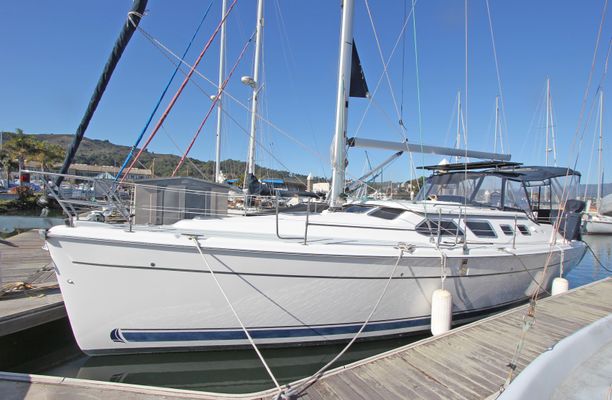
2005 Hunter 41 Deck Salon
The Hunter 41 DS won a coveted Cruising World magazine Boat of the Year Award in 2006 (Best Production Cruiser 40 to 44 Feet; click FULL SPECS above to see full Cruising World review of the boat) and it's easy to see why: the boat's exceptionally comfortable and functional both below and on deck. She offers a tremendous amount of space and light below with 6' 10 headroom in the salon, a very functional galley, and two full staterooms with a Pullman berth forward and a queen aft set athwartship under the cockpit.
And topside note the ENORMOUS cockpit with walk-through transom and easy access to side and foredecks.
This particular example has had almost $60,000 spent on her over the past four years (including a new mast, rigging and all new sails, and the cockpit fully enclosed with canvas that shows practically as new) and shows absolutely bristol--the interior in particular shows practically AS NEW. Imagine is the two stateroom Owner's Layout, she has the deep draft keel (preferable on the Bay), is well equipped from the factory including a 54 hp Yanmar diesel (this was a significant upgrade from the standard 40 hp, and note a new transmission was installed earlier this year) and a full suite of electronics. Also note new electric windlass, new plumbing lines, last hauled July 2021 and diver on regularly since then.
She's ideal for anything from weekending at the dock to sailing the Bay to cruising down the coast to Mexico and should be considered a must see for anyone looking for a versatile and comfortable all-'rounder.
She's also very competitively priced, especially given her condition, and really must be seen to appreciate.
Specifications
Engine 1 Specifications
Media Gallery
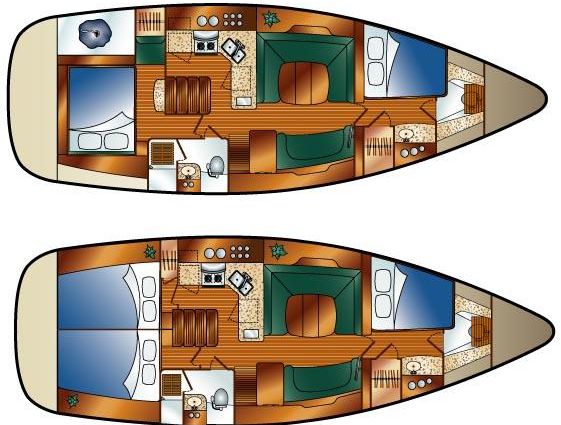 |
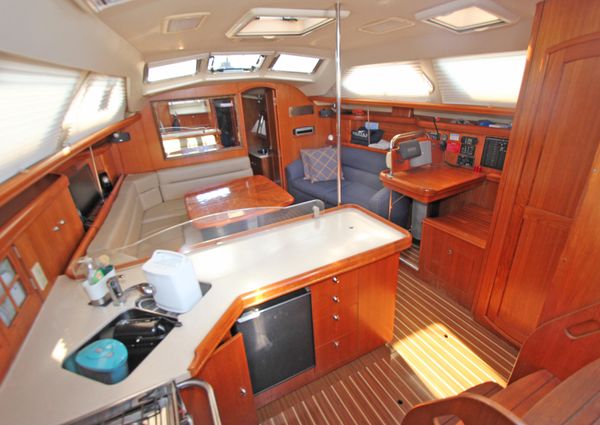 |
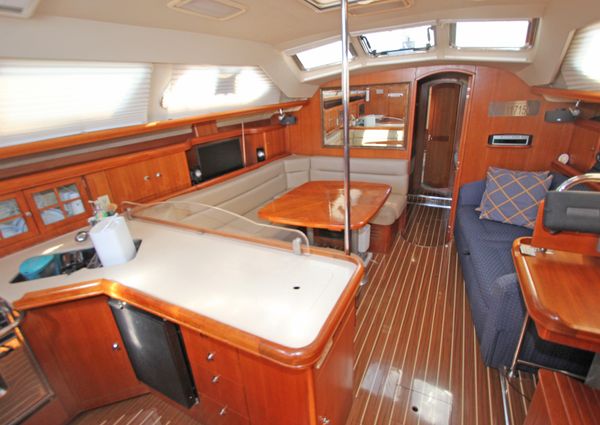 |
 |
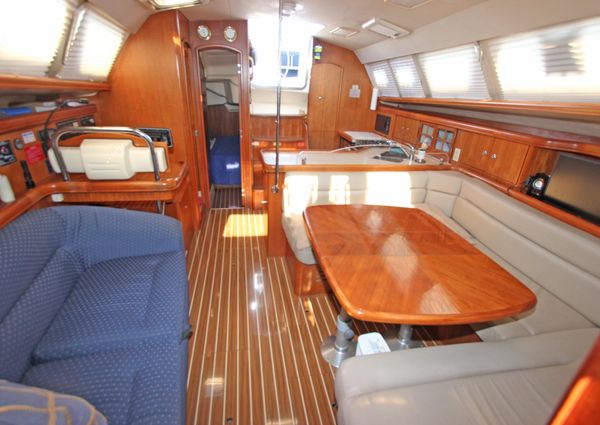 |
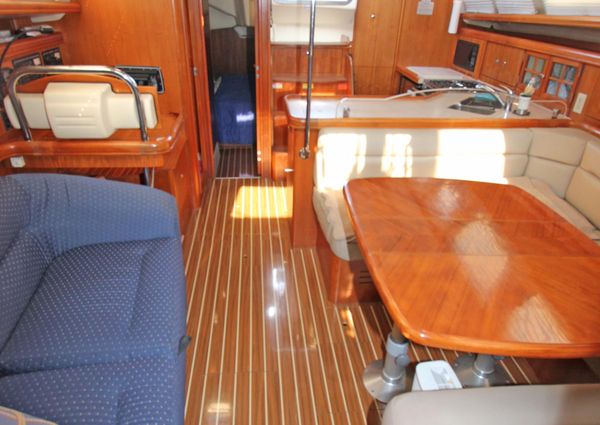 |
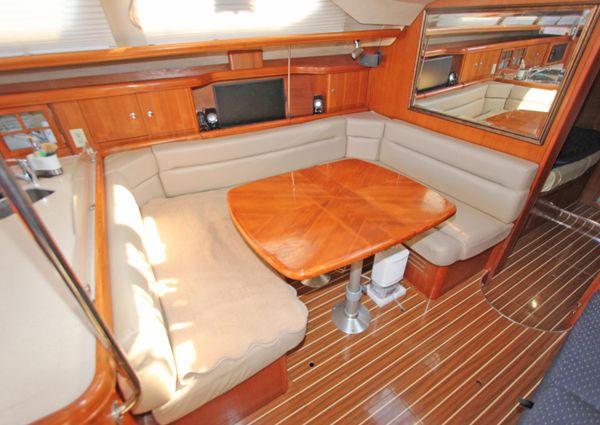 |
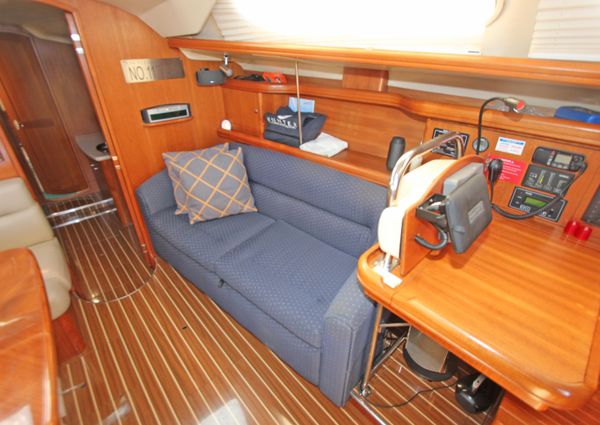 |
 |
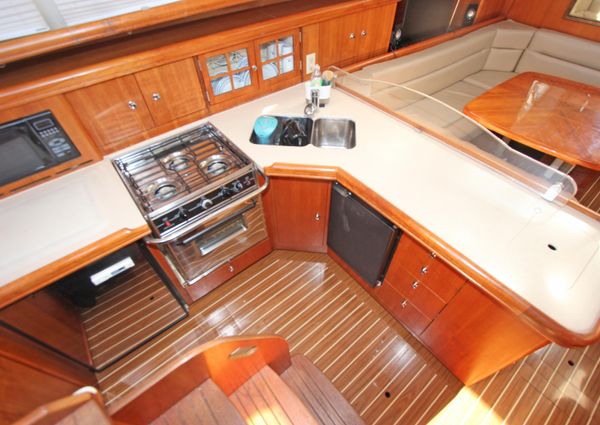 |
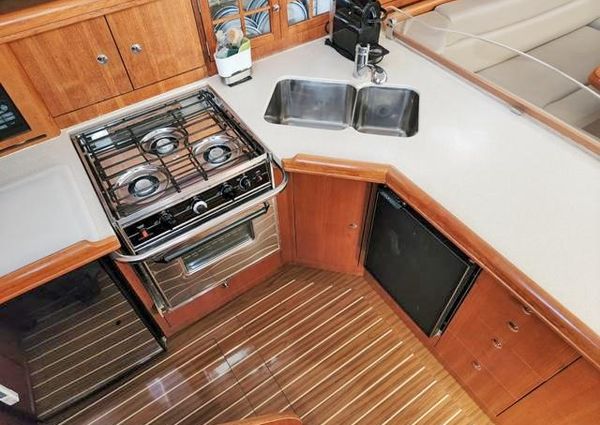 |
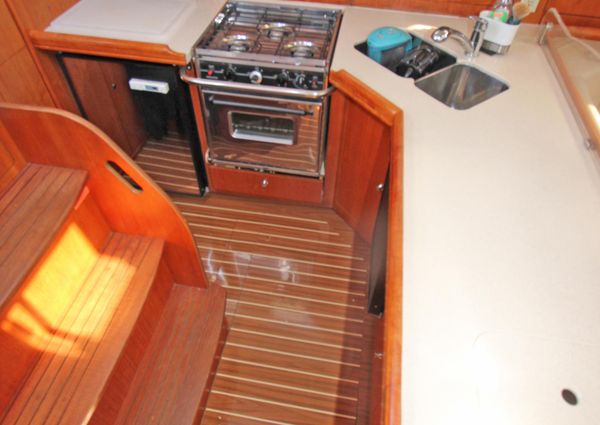 |
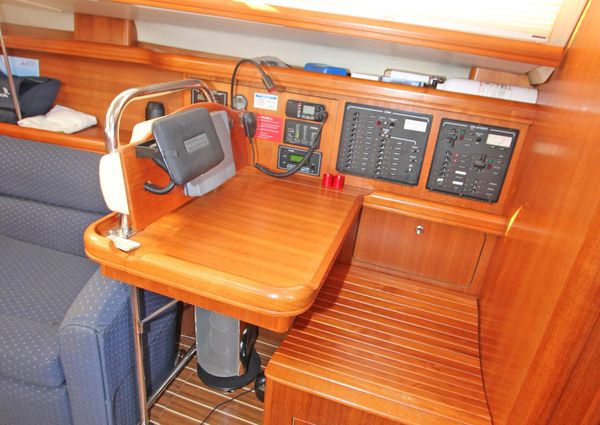 |
 |
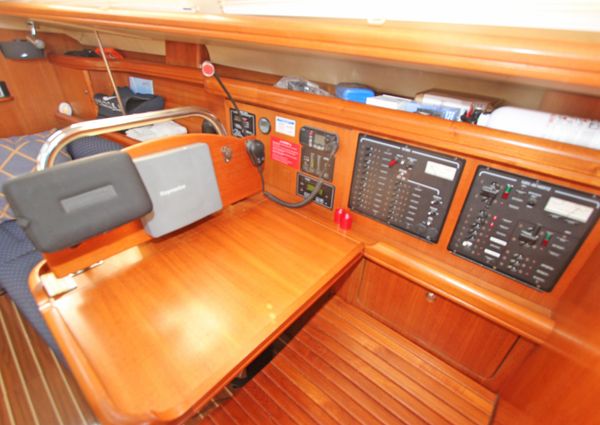 |
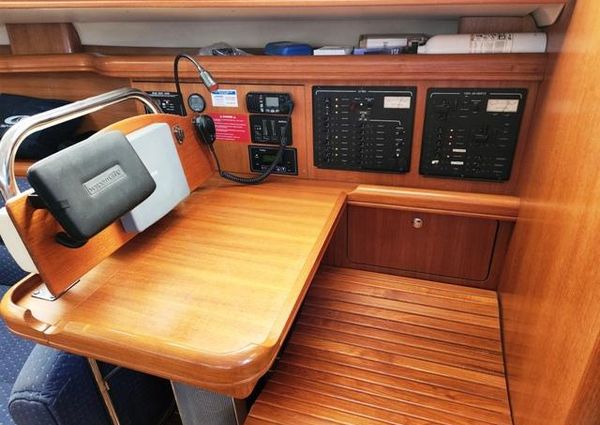 |
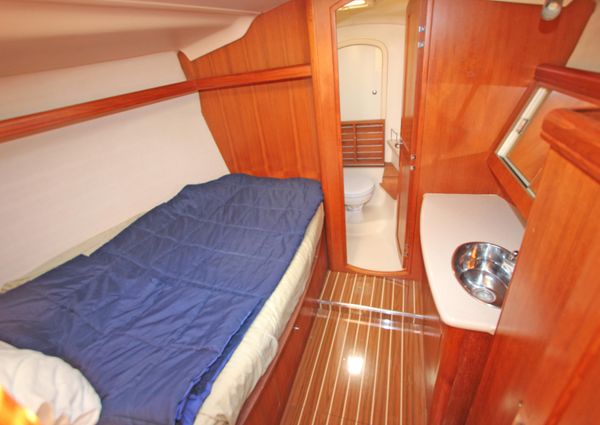 |
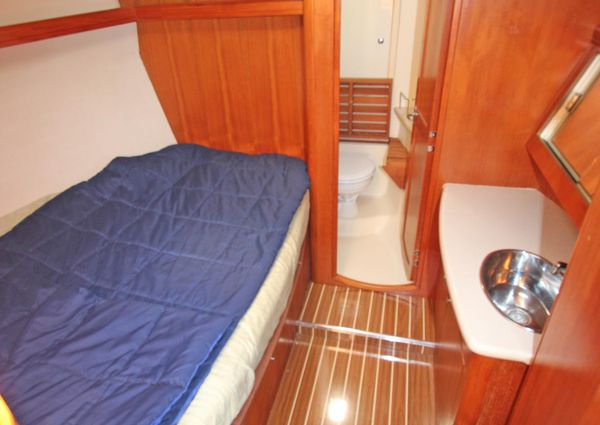 |
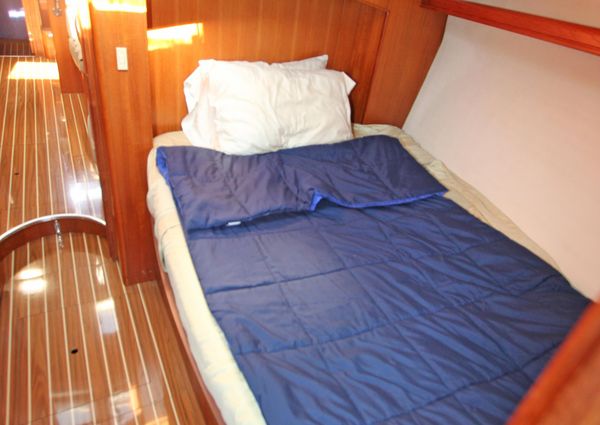 |
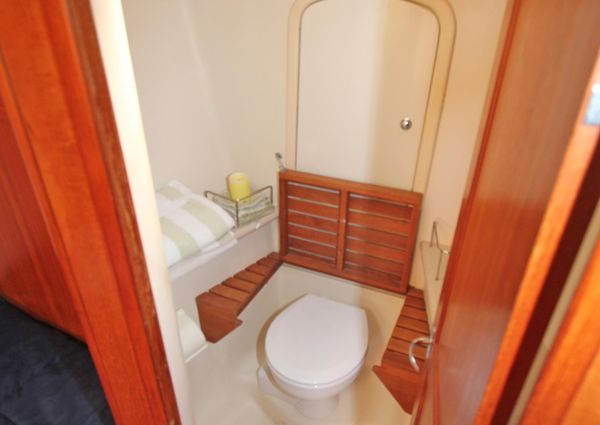 |
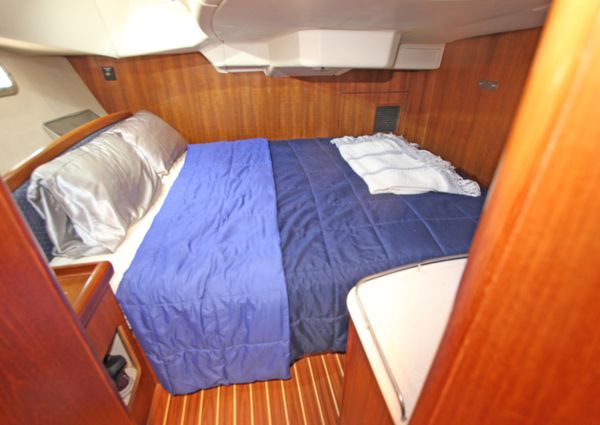 |
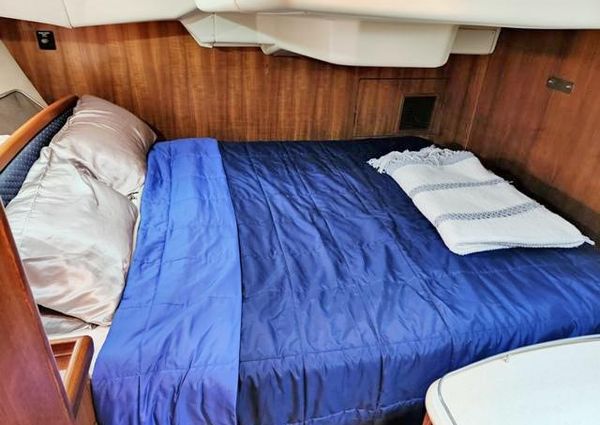 |
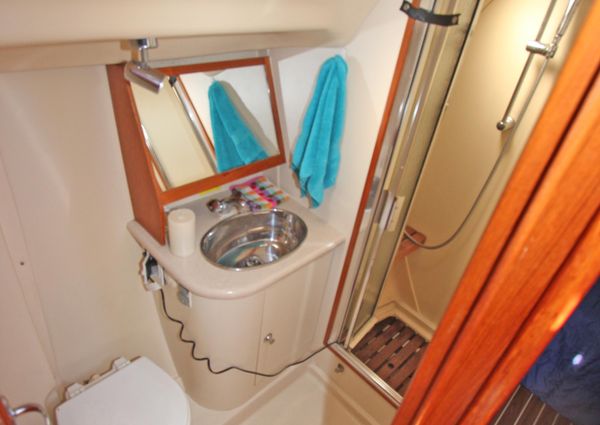 |
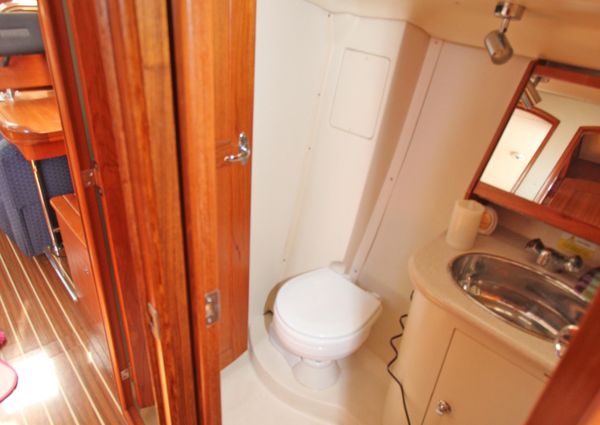 |
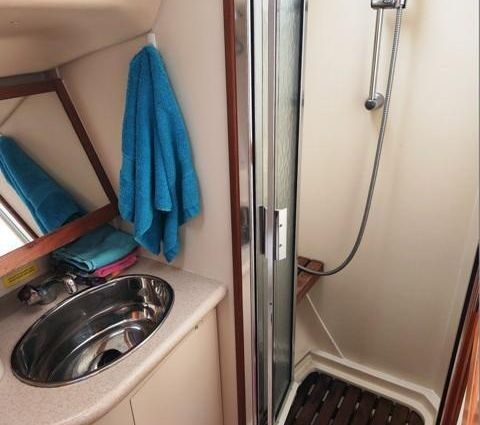 |
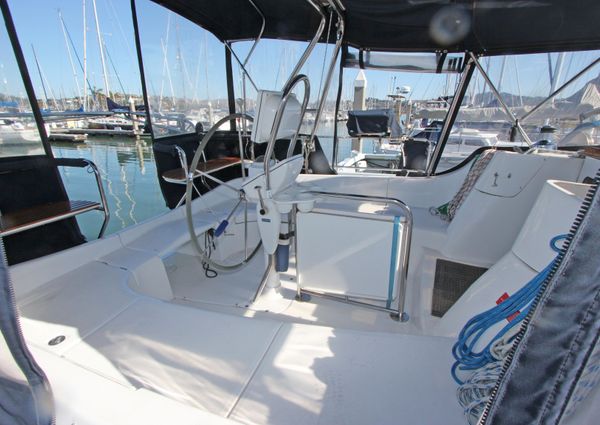 |
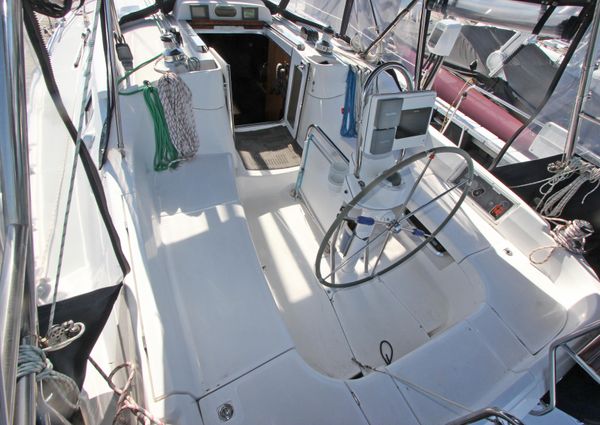 |
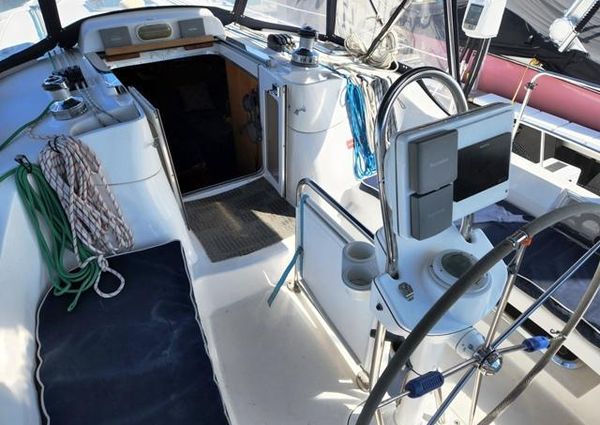 |
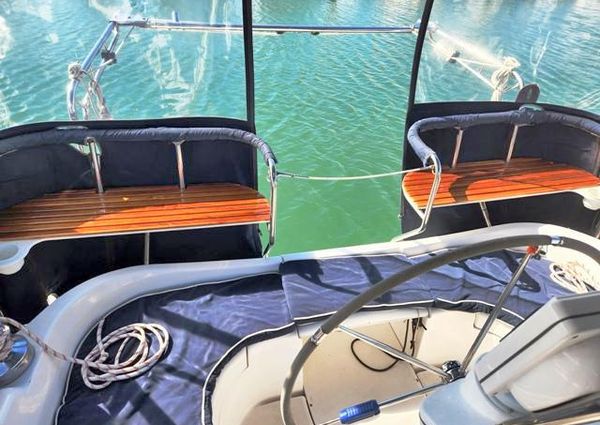 |
 |
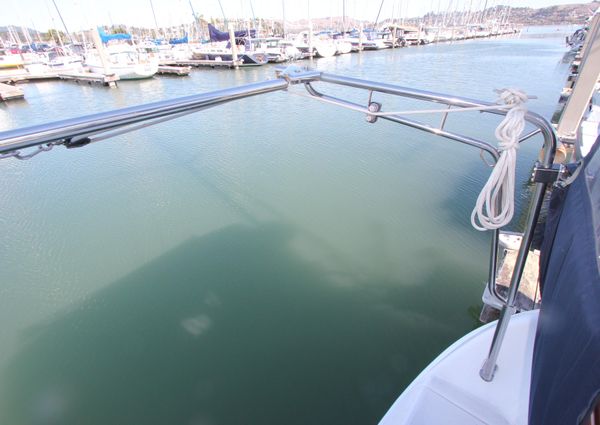 |
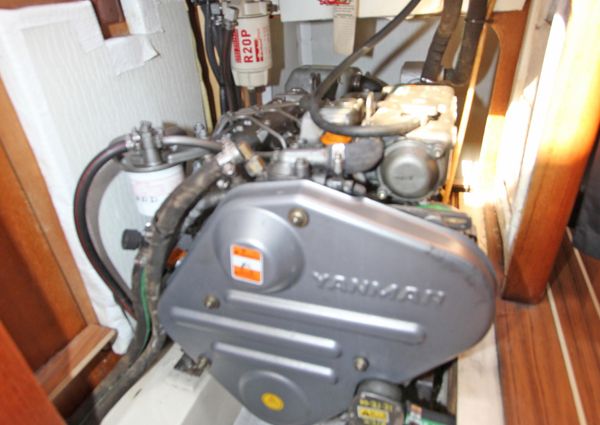 |
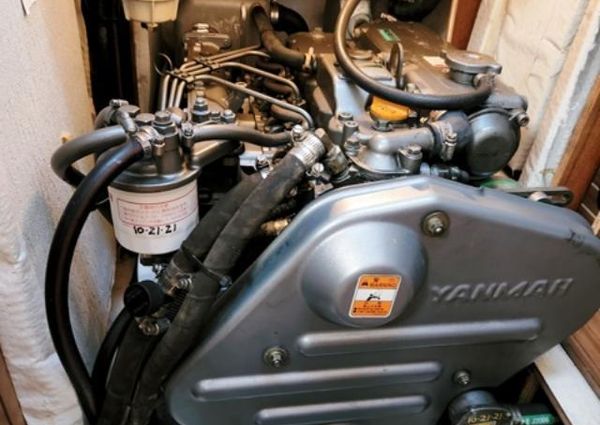 |
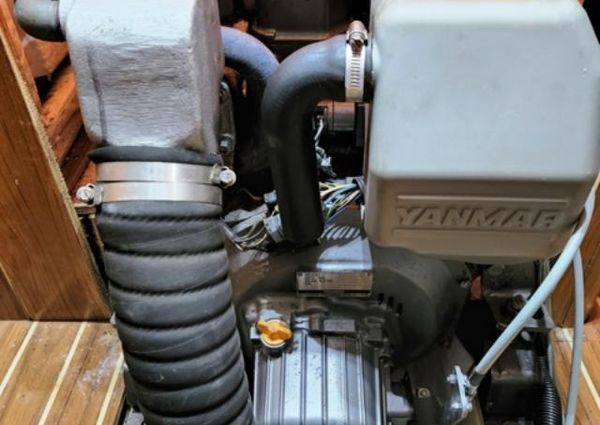 |
Head with shower far forward then step aft to guest stateroom with Pullman double berth port side and vanity, en suite sink and hanging locker over to starboard.
Up half a step aft to salon with giant double drop leaf table and commensurately sized C-shaped dinette to port, built in love seat with storage under to starboard.
Continue aft to functional L shaped galley port, centerline compaionway to cockpit and dedicated nav table starboard, aft of nav station is head with separate stall shower then master stateroom far aft, master has queen berth set athwartship under the cockpit and can offer private access to the head (just shut the door to salon).
Note it's light, bright and airy with 6' 10 headroom below (all reasons why the Deck Salon layout has become so popular!) which shows and smells as new.
Very functional L shaped galley with dual basin polished stainless steel sinks with hot/cold QuietWater pump pressure water (11 gal. hot water heater, 120V AC and engine fired), Seaward three burner propane gimballed stove with oven, Tappan built in microwave oven, Nova-Kool R3800 refrigeration, Nova-Kool F1900 freezer (2016)
Two Jabsco Quietflush electric freshwater toilets with holding tank and new macerator.
110V AC / 12V DC. Thirty amp shoreower service with Xantrex Freedom 20 2000W inverter/100amp charger with Link Pro battery monitor and Charles Isoguard 3.6kVA isoltion transformer, two Kyocera 140W solar panels and single 165W solar panel with Bluesky Solar Boost 2000E 25 A MPPT solar charge controller, Hitachi 80 amp alternator.
Three Mastervolt 12V Slimline AGM batteries (house bank, 200 AH), single Mastervolt 12V Gp. 27 battery (engine start, 90 AH). Batteries new in late 2017).
Honda EU2000i 2000W portable genset.
Raymarine Axiom touch screen color GPS chartplotter, Raymarine ST6001 SmartPilot autopilot, Vesper Marine AIS Watch Mate, two Raymarine ST2 90 speed/log/depth sounders, Raymarine ST2 90 wind speed/direction indicator, Icom IC-M402 VHF radio, sat phone, Danforth 4" magnetic compass.
Hunter B&R rig with Selden deck stepped double spreader aluminum mast with compression post and 1x19 stainless steel standing rigging, aluminum boom with Selden Rodkicker 20BV rigid boomvang, Harken mainsheet with traveller on heavy duty stainless steel arch and in-mast furled dacron mainsail, 110% jib on Furlex 240S roller furler.
Three Lewmar #44 self tailing winches (one of which is electric), single Lewmar #40 self tailing winch, inboard genoa track with movable cars, all lines lead aft thru nine Spinlock rope clutches.
Note the whole rig including rigging and sails was replaced in 2018 to the tune of $46,000.
Molded fiberglass hull--hull is solid laminate below water line with Kevlar reinforcement in stem and keel stub and a grid-type hull liner, topsides and decks have end-grain balsa core.
Stainless steel stanchions with double lifelines, stainless steel bow pulpit, stainless steel stern pulpit with built in "catbird seats", step-thru transom with molded in swim platform with collapsible swim ladder, polished stainless steel dingy davits.
Simpson-Lawrence 12V vertical dual action anchor windlass, stainless steel dual bow anchor roller with 44lb Rocna plow anchor with 100' 5/16" chain and 250' 5/8" three strand line rode. Six stainless steel mooring cleats.
Yanmar 4JH4E four cyclinder 54 horsepower 4 stroke naturally aspirated fresh water cooled diesel with Kanzaki transmission, stainless steel shaft thru bronze strut to bronze three bladed feathering prop, Whitlock direct drive steering gear with Lewmar stainless steel folding wheel.
What luck! This blustery fall day on Chesapeake Bay, yacht designer (and Hunter’s director of engineering) Glenn Henderson would sail with us aboard one of his team’s creations, the shoal-draft version of the Hunter 41 DS, a spin-off from the year-old aft-cockpit Hunter 41. We joined the deck-saloon sloop by launch as it luffed up in Eastport’s lee, near the mouth of Back Creek in Annapolis, Maryland. People and gear were quickly pulled aboard, and Henderson was champing at the bit to tell me his baby’s story. “First off,” he said, “I wanted a boat that would have all the systems and conveniences you’d expect in a house and also be capable of long-distance offshore passages.”
I looked down the broad decks–the 41 DS has a 3:1 length-to-beam ratio–held high above the water by substantial freeboard, and I thought that the first part of the wish was eminently possible. But I also wondered, would she sail? So many builders of successful designs have pushed the interior-volume envelope so far that their creations no longer effectively harness the wind.
We cracked off in very light air, heading for the unprotected waters of the bay. I was visibly surprised when the boat-with a modest 17.2 sail area-to-displacement ratio–responded dramatically, accelerating as the optional Selden in-mast furling main and Furlex roller-furling genoa filled. Henderson had been watching for my reaction, and when he got what he wanted, he said, “Sail area/displacement doesn’t always tell the story. Right off the bat, I try to make my hulls easily driven. Of course,” he added with a wry smile, “they put three-bladed props on them, but I can’t do anything about that."
Coaxing the Coefficients
Henderson then explained that with each boat he designs, he tries to push one of the design coefficients: fineness, block (underwater volume compared with a block with the same overall dimensions), midship (the ratio of underwater fullness to that same block amidships), or prismatic coefficient (Cp). For the Hunter 41 and 41 DS, he decided to push the Cp, a mathematical description of how full a boat is in the ends.
“The extremes for sailboats are between .49 and .62,” Henderson said, the higher figure equating to fuller ends. The higher the Cp, the more stable–and sluggish–the hull form. While trying to pick the ideal Cp at one point on the hull and determine an optimal speed-to-length ratio, it occurred to Henderson that the Cp is a single number that defines two different ends but treats them equally. “So I decided to cut the boat in two at max beam and make a graph of stern and bow Cps,” he said. Henderson analyzed the numbers from past Hunters, then extrapolated the ranges to the behavior of the respective designs. “I then could safely take that data and apply more radical treatment [to the 41 DS] and yet be safe that the boat wouldn’t be over the edge,” he said. The numbers he arrived at–lower Cp for the bow, higher for the stern–had the most effect on boat speed and motion.
The boat accelerated well in both light and heavy air, and it got up to speed quickly as we cleared Horn Point and took head-on the full 18- to 20-knot brunt of a northeasterly wind. While the seas weren’t large, they were sloppy and persistent, and the 41 DS coursed easily through them at more than 6 knots, the helm delicate and responsive as we picked our way through wakes and around crab-pot buoys. A stem closer to plumb not only increased the waterline but also reduced pitching.
For Henderson, responsiveness in the 41 DS was an important factor. It’s a “largish” boat, he said, and it’s likely to be carrying a number of passengers, with only one or two familiar with the boat. He wanted to make this boat as maneuverable as possible in crowded situations-wharf areas, marinas, crowded harbors, any tight quarters. The Whitlock direct-drive steering system and balanced spade rudder with a stainless-steel rudderstock certainly help to achieve this. “Responsiveness is also a good attribute when sailing in really rough seas offshore and steering through waves,” he added. Versatile Deck Layout
Out in the bay, the 41 DS was steady and smooth as we put it through its paces. I’m 5 feet 7 inches tall, and I found the visibility forward, over the dodger, excellent. Where once the mainsheet was led solely to the cabin top, strategic positioning of hardware and winches allows the solo crew to trim from the companionway–or the gregarious skipper with a cockpit full of guests to run the boat from the fantail. The mainsheet can be led from the cabin top and sheeted on the spinnaker winch, creating little interference with the cockpit. When in port, the 40-inch wheel folds out of the way to create more space for socializing.
The side decks are wide and graced with a terrific nonskid pattern. The first time I went to the foredeck, I felt secure, bracing myself on the stout handrails on the dodger and the cabin top. Slippery areas existed, though, around the forward hatch and on the corners and visor of the house.
With 777 square feet of working sail (we sailed with the optional vertical-batten in-mast furling main) on a 19,400-pound displacement, this Hunter isn’t over canvased. Yet in 13 to 15 knots of wind on a truly messy sea, we logged close to 7 knots of speed, accelerating with every gust but never overpowered. “I’d rather have a boat that’s easily driven and, at the same time, manageable and able to sail in relatively stiff breezes without reefing than one that excels in light airs to the exclusion of high-wind performance,” said Henderson.
The most impressive aspect of the 41 DS was how quickly it was able to accelerate. Henderson said he achieved this by pushing the volume forward so the stern corner was out of the water, which flattened the stern wave. “Hull speed is derived from bow and stern waves,” he said. “If the boat goes too fast and gets too far ahead of the stern wave, it falls into a hole. So, by virtue of an S-shaped curve at the quarters, I artificially induced a wave to form farther aft, which in essence increased the waterline length and the boat speed.”
When I went below on the wide companionway steps, holding on to perfectly positioned grabrails, the ride was smooth and quiet, even though conditions outside were anything but. Later, when we ran the 40-horsepower Yanmar with a conventional shaft at 2,500 rpm, the noise level remained low.
Light and Airy Saloon
Upon entering the saloon, I was struck by the awesome, 6-foot-10-inch headroom and the light and airiness created by the raised deck. Just forward and to port of the steps is the L-shaped galley. Corian countertops (with an inset waste bin and, to protect the dinette, a clear backsplash with rounded edges) are surrounded by high, inward-curved fiddles, which do double duty as grabrails as you prepare meals and approach or descend the companionway. These ergonomic fiddles are found throughout the boat along shelf edges over settees and in the cabins. In the galley, at the stove, a harness will be needed, especially when on port tack.
The double sinks, positioned diagonally in the angle of the L, would take some getting used to while washing up in a seaway. Aft of them is a gimbaled two-burner propane stove and oven, with a microwave set above, and a stainless-steel front-loading fridge. The pantry, with shelves and a deep bin, is worthy of any small home, and there’s in-sole storage for cans and jars. With two opening ports, a hatch, and proximity to the companionway, galley ventilation will be superb. Forward of the galley is the dinette; all three seats could serve as extra berths while on passage, and the table, with telescoping support, converts to a double berth. A vertical stainless-steel grabrail is conveniently located between the galley counter and the dinette.
The aft head/shower stall, with two frosted opening ports, is to starboard of the companionway; just aft of it is the door to the aft cabin, with its athwartships queen berth, private entrance to the head, Corian-topped vanity, cedar-lined hanging locker, and lots of drawers. With two opening ports and a hatch, cross-ventilation will be excellent. The forward-facing nav station, forward of the head, has a radiused, battened seat for comfort and efficiency in a seaway, a lift-top desk with more of those seamanlike fiddles, and a mahogany console on which to mount remote instrument readouts. Opposite the dinette is a full-sized couch, with a large drawer under and, on the boat we sailed, a plasma-TV and sound system over.
The forward cabin, with 6 feet 2 inches of headroom, has a comfy double to port, with fiddled shelves all around and drawers under. To starboard is another cedar hanging locker and a Corian-topped vanity. The head/shower is in the peak and, thus, only usable on a flat sea or in port.
I stepped off this Hunter impressed. The 41 DS seems to cover many bases and includes many details in an attractive package that really works. Apparently, Cruising World’s 2006 Boat of the Year judges also think the Hunter Design Group is on the right track: The 41 DS was voted Best Production Cruiser 40 to 44 Feet (see “Crunching the Numbers,” January 2006).
Also noted by the BOTY judges was Hunter’s attention, throughout the boat, to American Boat & Yacht Council (ABYC) specifications, anticipating, in at least two cases–carbon-monoxide and smoke detectors–future ABYC recommendations. One judge, ABYC curriculum designer and senior instructor Ed Sherman, said, “I think the build quality is much higher in terms of fit and finish. It certainly represents a lot of bang for the buck.”
But for me, it was the Hunter’s performance that stood out, which I reiterated to Henderson. “My primary objectives were high stability, boat speed, a good motion in a seaway, and reactivity or responsiveness,” he replied. “These four attributes make up what is commonly known as ‘performance.'”
Nim Marsh, Cruising World, June 2, 2006
The profile creates almost a "sport sedan" look for the 41DS, and its large polished-aluminum windows definitely sets the DS apart from its sister ship. Inside, the headroom has been increased 4" to a spectacular 6'10". The voluminous ceilings are covered with a light fabric called Whisper-Air, which combines with the increased light entering from the sizeable new windows to produce a comfortable, bright and open feel. OceanAire designer shades cover the windows when privacy is desired and add a nice decorative touch.
Durable and handsome Everwear laminate flooring is being introduced by Luhrs Marine, the parent company of Hunter Marine, across most of its boating product, but the 41DS will get an exclusive "glossy" version. The standard two-cabin version has an aft master stateroom with queen innerspring mattress, cedar-lined hanging locker, built-in vanity, and a dual-entrance head with shower; the forward guest suite has a wide double berth, built-in vanity, and private head with shower. A three-cabin version is also offered.
Galley highlights include a custom stainless steel refrigerator and freezer, dual deep sinks, pantry, gimbaled two-burner propane stove with oven, a glass-fronted lighted dishware cabinet and deluxe Corian countertops.
The 41DS maintains the 41's sail plan and hull design. The B & R rig with a large mainsail and smaller head sail is a Hunter trademark, and all the running rigging is within reach of the cockpit to make sailing single-handed a breeze. Furling mainsail is an option. The innovative steel overhead traveler arch keeps the deck safe and uncluttered, and offers a great place to connect a bimini or attach stereo speakers. A more vertical bow profile is utilized to maximize waterline length and decrease pitching motion.
The Company offers the details of this vessel in good faith but cannot guarantee or warrant the accuracy of this information nor warrant the condition of the vessel. A buyer should instruct his agents, or his surveyors, to investigate such details as the buyer desires validated. This vessel is offered subject to prior sale, price change, or withdrawal without notice.